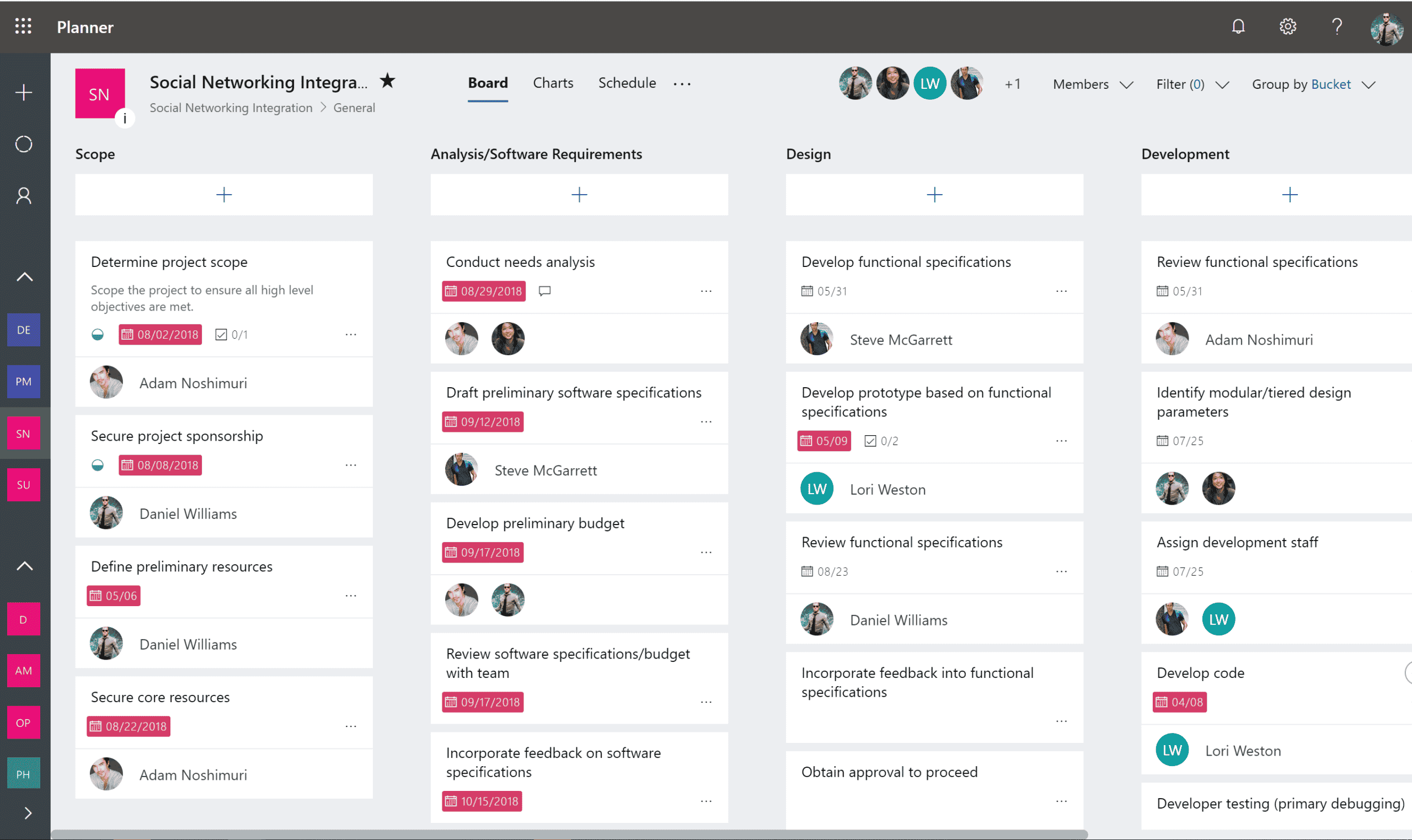
Open the team under which the app is created. Under Add to Channel, make sure the channel under which the app should be shown is listed and shows as at least "1 active tab(s)" and not "0 active tab(s)". Select Save on the top-right side of the screen to save the app. If you want, you can also delete Screen1 instead. Upon selecting the Create Task button, it'll use the parameters provided in the formula to figure out the team for which the task is being created, the planner within the team the task is to be created, the Title from the text box captured on the screen, and the From and Due dates captured on the screen. Planner.CreateTaskV3(Īssignments: AssignedTo.Selected.'User Name' PropertyĬopy the following formula in the OnSelect property of Button_CreateTask. Planner.ListGroupPlans(Param("groupID")).valueĪdd a button to the bottom of the screen with the following properties. Planner gets added as a data connection to the app

Select + Add data, and then select Connectors.Įnter "Planner" in the search box to look for the Planner connector. Select the database option from the left-pane to connect to the Planner. Select the team created earlier, and select Create to open Power Apps Studio.Įnter a name for the app, such as "Integrate with Planner", and select Save. We'll create an app with five fields capturing details that will be used to create a Task in Planner. The new team gets created and is listed under the Teams tab. Select and add any members in your organization that you'd like to add to the team for testing purposes, and select Add. To create a new team, select the Teams tab > select Join or create a team > select Create Team > select From Scratch > select Public, and give the team a name such as "Planner Integration". Skip this section if you already have a team that you want to use instead. In this section, we'll create a new Teams team and then create an app within that team. Login into Teams using either the Desktop app or the web app. We'll also need the ability to connect to Planner. Here are just seven of the best team planners to take a closer look at: 1.To complete this lesson, we'd need the ability to create apps within Teams that will be available as part of select Microsoft 365 subscriptions. Team planners effectively integrate your colleagues’ calendars into one intelligent space, helping you visualize all work, coordinate schedules and plan resources thoughtfully across teams and projects.

Capacity – regularly working long hours and never making back overtime.Visibility – not knowing what tasks colleagues are working on or when they should be finished.Consider whether any of these common problems apply to your team: To find the best solution, you first need to identify your team’s specific planning needs – from trans-time zone coordination to visualizing important project milestones. A good team planner can help you see what colleagues are working on, identify optimal times for collaboration and plan resources effectively across all your commitments. Thankfully, a ton of innovative planning tools are available for teams looking to enhance collaboration and stay aligned. It’s hard enough managing your own schedule, let alone balancing team resources between projects and clients – and modern ways of working throw even more challenges into the mix, making collaboration increasing virtual, globally distributed and out-of-house.īut failing to get your team in order comes with serious operational and cultural consequences, with 86% of employees and executives citing a lack of collaboration or ineffective communication for workplace failures.


 0 kommentar(er)
0 kommentar(er)
